10 fascinating journeys into British history

From stone circles to Viking invasions and wars that changed the world, Britain’s history is rich, diverse and at times, more than a little gory.
Etched across the landscape, the UK’s past has intrigued generations and led to a legacy of trails. Today, an ever-increasing number of heritage trails are opening up, bringing to life the history that's right on our doorstep.
With the autumn colour coming in, the kids back in school and cooler days descending, now is the perfect time to get out and about in the UK.

1. The Giant’s Causeway heritage route, Northern Ireland
Instead of rushing up, clicking your camera in front of your face and running away again to the next must-see sight, take the time to explore the heritage of the area surrounding one of Ireland’s most iconic sights.
This five-mile walk takes you from the the ruins of Dunseverick Castle along a the cliff top to Giant’s Causeway. Go with a guide to uncover the 62 million year-old landscape, the history of the local fishing and farming communities and how the coastline was used defensively during the Second World War.
How: Away A Wee Walk offers guided walks along the coastline (from £35; awayaweewalk.com).
2. Dover castle to Deal castle, England
There’s not much that feels more British than a good castle and the 10-mile stretch of coast between Dover and Deal features three – the remnants of Henry VIII’s penchant for offending Catholic kings on the European Continent and the resulting need to fortify to the coast.
With plenty to see along this route, it’s worth starting early at the medieval fort of Dover Castle – the ‘Key to England’. There’s also much more to see en route than just the castles, such as the Blériot Memorial (testament to the first flight across the English Channel in 1909), Dover Coastguard Station, the Saxon Shore Path, Dover Patrol Memorial and, of course, the famed White Cliffs.
How: Park at either Dover or Deal for the 3-4-hour linear walk and hop on the train back (english-heritage.org.uk).
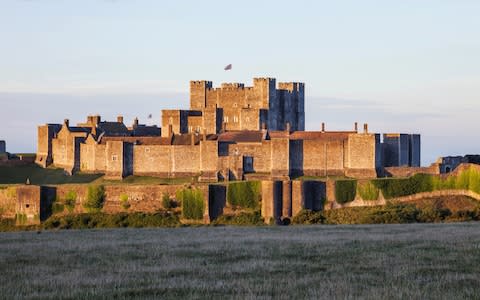
3. Victorian Heritage Trail, Scotland
It has been 170 years since the Royal Family fell in love with the Balmoral Estate. After first visiting in 1848 under a lease, Prince Albert bought Balmoral Castle for Queen Victoria in 1852. The pair then rebuilt the castle (balmoralcastle.com) and made their mark on the surrounding area.
Best explored over four days, the Victorian Heritage Trail covers 76 miles of Royal Deeside. Highlights of the trail include the Victorian architecture that can be seen combined with a 13th-century tower and Jacobean mansion at Drum Castle, the railway station used by Queen Victoria, Glen Tanar Estate in the stunning Cairngorms, Braemar Castle, Loch Muick and of course, the Balmoral Estate.
How: Take a four-day break to explore the beautiful Highlands in a royal fashion (visitscotland.com).
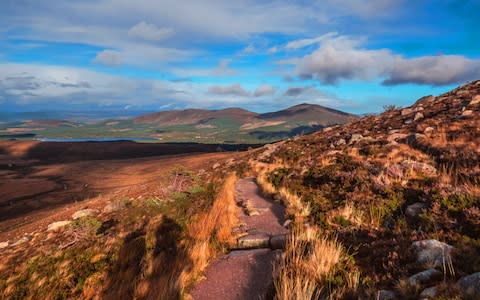
4. The Dylan Thomas Birthday Walk, Wales
“A springful of larks in a rolling cloud and the roadside bushes brimming with whistling blackbirds and the sun of October summery."
In celebration of Dylan Thomas’ Poem in October which recalls the walk that he took on his 30th birthday (October 27, 1944), this trail follows in the footsteps of the famous welsh poet.
The two-mile self-guided walk starts at the “castle Brown as owls” and continues through the landscapes of Laugharne that inspired Thomas – including Milk Wood of Under Milkwood fame – with engraved benches and boards bearing the lines of the poem along the way.
The walk takes you uphill and includes the famous Boathouse as well as views out over the estuary, the Gower, north Devon, Caldey Island and Tenby. Follow the route on your own birthday and local businesses will offer you a selection of treats on the house.
How: The two-mile route is signposted with brown and white locators (dylanthomasbirthdaywalk.co.uk).
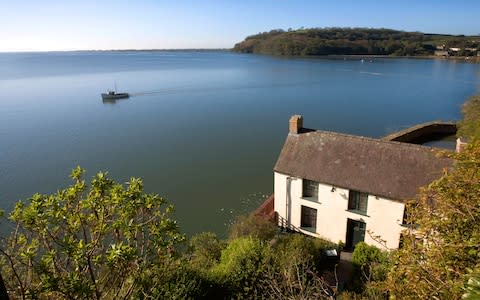
5. Bradford on Avon to Farleigh Hungerford Castle, England
This trail begins at Bradford on Avon, which Telegraph expert Sarah Baxter describes as; “a little bit of Bath-lite with its bucolic views of the river, canal and Cotswold fringes, fine old buildings, and a raft of good places to eat”.
The walk starts at the town’s 14th-century tithe barn – one of the best examples of a medieval barn in the country – and continues along the 19th-century Kennett and Avon Canal past Westwood Church. From here you can see the famed Westbury White Horse, cut into the chalky hillside in the late 17th Century.
A slight detour will take you to Westwood Manor – a 15th-century National Trust property. Many end the walk at Farleigh Hungerford Castle. Here you can learn all about the Hungerford family’s involvement in some of the most important events in English history, including the Wars of the Roses, the Hundred Years’ War, the Reformation, the Civil War and the Restoration.
How: The six-mile route takes around three hours. Detailed directions can be found on the English Heritage website (blog.english-heritage.org.uk).
6. Scotland’s Castle Trail
Scotland is also renowned for its abundance of ancient castles and Aberdeenshire is known as ‘Castle Country’. This trail is definitely more of a long break than a day trip, but it’s certainly worth it for history buffs, with an impressive 19 castles to discover.
Over 311 miles, the route from Stonehaven to Craigievar includes the coastal Dunnottar Castle, where you can spot puffins and dolphins (depending on the season), Tolquhon Castle, impressive Fyvie Castle on the Loch of Fyvie, Huntly Castle, which served as a baronial residence for the Gordons for five centuries, Braemar Castle, the seat of Clan Farquharson, Craigievar with its riot of turrets and gargoyles, and many more.
How:Follow the distinctive brown and white Castle Trail road signs that snake across Aberdeenshire. Visit Scotland recommend a six-day itinerary to take in the heritage of the area (visitscotland.com).

7. Saint Patrick’s country, Ireland
Christianity is an undeniable part of Ireland’s heritage. While this has been dominated in recent history by the split between Catholics and Protestants, the belief in a Christian God in Ireland goes back much further – to the 5th Century and St Patrick, who was the first to convert pagans across the isle.
Covering 355 miles and an advisory three days of driving, while the Saint Patrick's Country route can be split into Northern Ireland and the Republic of Ireland, the entire route includes Downpatrick, the believed resting place of the saint, Patrick’s sanctuary, in the middle of Lough Derg where the cave sits where he spent time praying, and Croagh Patrick.
How: Take a three-day self-drive road trip across Ireland (www.ireland.com).
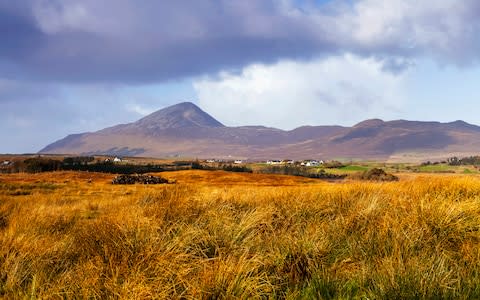
8. The Birdoswald Roman Trail, England
The Romans left a lasting mark on British history. Their roads cleaved ways across the landscape that are still used today and remnants of their impressive ingenuity can still be found speckled across Britain.
Aside from the Roman Baths, Hadrian’s Wall – on the edge of the vast Roman frontier – is one of the best examples of their ancient footprint. While you can walk sections of the 84-mile wall (nationaltrail.co.uk), which crosses and dips through the Cumbrian and Northumbrian borders, you can also drive between the sections.
One of the best for a day out is the 30-mile section of the western wall, which snakes from the River Irthing to Harrow's Scar to Bowness-on-the-Solway.
Highlights include Lanercost Priory, which suffered frequent attacks during the Anglo-Saxon wars, Hare Hill, which stands at 2.7 metres, Pike Hill Signal Tower, which pre-dates Hadrian’s Wall, Birdoswald Roman Fort and Harrow’s Scar Milecastle where you can see the longest stretch of the wall.
How: This section of the wall can be driven in just under an hour, excluding stops (english-heritage.org.uk).
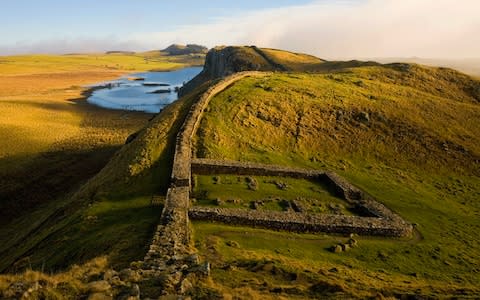
9. The Angidy Trail, Wales
If your interest lies in the history of industry, this is the route for you. Looping around the Angidy Valley, the trail highlights Tintern’s industrial past.
From the hillforts of Iron Age tribes to the fiery furnaces of the industrial revolution (powered by the surrounding waterways and woodland) and viewpoints that have been popular with visitors since the 18th century, there’s plenty to explore. Highlights include the Wireworks, Abbey Tintern Furnace and the Tilting Mill.
How: This five-mile circular walk around Tintern’s Angidy Valley starts at the Lower Wirework and takes around three hours (visitmonmouthshire.com; download the free leaflet).
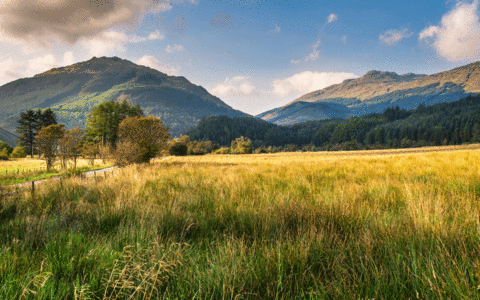
10. The Hidden Heritage Trail, Scotland
Following the 3.5-mile footpath along part of the Three Lochs Way (threelochsway.co.uk), the Hidden Heritage Trail (hiddenheritage.org.uk) tells the history of the isthmus that separates Loch Lomond and Loch Long between Arrochar and Tarbet.
Highlights include climbing hotspot ‘The Cobbler’, Inverioch House – built in 1697 as the seat of Clan MacFarlane, the remains of a sheep fank from the 1800s, the Ballyhennan Toll House, the ‘Witches Ring’ (also known as the ‘Vikings burial mound’) and part of the West Highland Line railway.
How: The 3.5-mile trail is signposted with the Three Lochs Way and Hidden Heritage waymarkers (download the free leaflet).

